Results 11,691 to 11,700 of 12091
Thread: Anandtech News
-
04-13-23, 02:02 PM #11691
Anandtech: Seagate Unveils IronWolf Pro 22TB HDD at 2023 NAB Show
Coinciding with the 2023 NAB Show starting this weekend, Seagate has come out with a couple of announcements today. The new hardware introduction is the updated flagship capacity option for the IronWolf Pro HDD lineup targeting the SMB / SME NAS market. The lineup's new 22TB option now matches the highest capacity offered in the WD Red Pro line launched in July 2022. Interestingly, this announcement comes in advance of the retail launch of the corresponding Exos X22 line (which, according to Seagate's investor filings, is already in deployment in datacenters).
Seagate also providing technical details in addition to announcing retail availability of the new ST22000NT001 model. This is a 10-disk / 20-head configuration with conventional magnetic recording (CMR). The drive has a 3.5" form-factor and sports a SATA 6 Gbps interface. The drive is equipped with a 512 MB cache and has a 7200 RPM spindle speed. Noise ratings indicate 20 dBA at idle and 26 dbA for active seeks under typical conditions. However, it can go up to 30 - 34 dbA under heavy loading. The SKU has a MSRP of $600, matching WD's launch pricing for their 22TB lineup.
Seagate is a a few quarters behind WD in launching retail 22TB HDDs. However, with consumer demand in this market segment being a bit tepid. Deals for slightly lower capacity HDDs such as the 18TB and 16TB capacity points seem to abound, as those HDDs are no longer in demand with the hyperscalers, but there appears to be a glut in the supply. Seagate has probably not lost out much in the consumer market by being late in this introduction. More interestingly, Seagate is not restricting usage of the new drive to NAS units with bay counts of 24 or lower, instead opting to indicate 'Unlimited' in the datasheet.Seagate IronWolf Pro 22TB - Metrics of Interest Rated Workload (TB/yr) 550 Max. Sustained Transfer Rate (MBps) 285 Rated Load / Unload Cycles 600K Unrecoverable Read Errors 1 in 10E15 MTBF (Hours) 2.5M Power (Idle / Active) (W) 6.0 / 7.9 Warranty (Years) 5 + 3 years of Rescue Data Recovery Services Datasheet PDF
Though the new SKU has a MSRP of $600, the drive is currently on sale for $400 at Newegg (though this may be a pricing mistake).
In other news, Seagate also announced a collaboration with QNAP for supporting the Exos E Series JBOD systems and Seagate Lyve storage solutions with QuTS Hero-enabled ZFS NAS solutions to seamlessly enable enterprise-scale solutions from the edge.
More...
-
04-14-23, 08:01 PM #11692
Anandtech: Zotac’s Zbox Edge MI351 Packs Alder Lake-N and Offers Upgradeability
Introduced back at CES 2023, Intel’s Alder Lake-N platform is the company's newest and latest budget platform for entry-level PCs. With the hardware now shipping, Zotac is among the first well-known PC makers to offer use the platform for its Zbox Edge MI351 mini-PC. Though it's not as small as some of its competitors, it offers a degree of upgradeability and plenty of ports.
The Zotac Zbox Edge MI351 is based around Intel's N100 processor, which offers four Gracemont CPU cores operating at 800 MHz – 3.40 GHz and an Intel Xe-based iGPU with advanced media decoding (AV1, H.264, H.265, etc.) and encoding capabilities. From performance point of view, Intel's N100 should offer performance comparable to that of quad-core Skylake-class processors from 2015 – 2018, albeit with much more sophisticated multimedia engine. The latter of which is important not only for HTPCs, but also for various other applications N100 devices are aimed at, including kiosks and digital signage.
Looking at the MI351's design itself, it's interesting to see that Zotac opted to use an active cooling system with a fan to cool down the N100 processor. The official TDP of the N100 is just 6 Watts, but as Intel's modern TDP mantra means that chips are allowed to consume much more energy than that when turbo boosting, manufacturers are increasingly designing their boxes to sustain higher thermals in order to keep performance up.
The PC also offers a decent degree of upgradability for a budget, Atom-class box. Zotac hasn't soldered down any memory or NAND storage – a common sight in these devices – so the Zbox Edge MI351 offers a DIMM slot for a DDR5-4800 memory module as well as an M.2-2280 PCIe 3.0 x4 slot for a standard NVMe SSD.
Zotac's Zbox Edge MI351 also offers above-average connectivity for a low-end mini-PC. Besides a GbE port, four USB 3.2 ports Type-A ports are available (one on the front), as well as two 4Kp60-capable display outputs (DisplayPort 1.4, HDMI 2.0), and the usual 3.5mm audio in/out connectors. Wireless connectivity is also available via an integrated Wi-Fi 6 + Bluetooth 5.2 controller – though an external antenna (included) is needed to make use of them.
The trade-off for including room for DIMMs and M.2 SSDs, however, is that it requires a slightly larger footprint for the PC. Zotac's Zbox Edge MI351 system measures 149.5 mm x 149.5 mm x 28.5 mm (5.89 in x 5.89 in x 1.12 in), which is a tad smaller than Apple's M1 Mac Mini, but which is larger than many Atom-based systems. Still, the box is more than small enough that it offers VESA mounts, allowing one to hide it on the back of the display.
Finally, Zotac is not disclosing pricing for its Zbox Edge MI351 at this time. Keep in mind that this is being sold as a barebones unit, so buyers will need to include RAM and storage in their budget, as well as a copy of an OS.
More...
-
04-14-23, 08:01 PM #11693
Anandtech: Asus Announces ROG Phone 7 & ROG Phone 7 Ultimate Gaming Smartphones
Many gaming-eccentric smartphones may already be on the market, but Asus wants that throne all for itself. The company recently announced its latest ROG Phone 7 series of high-end gaming smartphones during their "For Those Who Dare" virtual event. The ROG Phone 7 series targets enthusiast mobile gamers. Asus has revealed two models for this generation: the ROG Phone 7 and ROG Phone 7 Ultimate. Both devices share identical specifications, while the Ultimate variant has a few extra bells and whistles that may interest some gamers.
The ROG Phone 7 series joins the ranks of the Samsung Galaxy S23, the OnePlus 11, the vivo iQOO 11, and the Xiaomi 13 Pro that utilize Qualcomm's latest Snapdragon 8 Gen 2 (SM8550) SoC. The 4 nm SoC conforms to an octa-core design consisting of one sizeable prime core (Cortex-X3), four performance cores (two Cortex-A715 and two Cortex-A710), and three efficiency cores (Cortex-A510). Like the majority competition, Asus uses the vanilla SM8550 with a 3.2 GHz clock speed on the Kryo prime core. However, Samsung's Galaxy S23 lineup uses a special-binned variant that hits 3.36 GHz.
On the graphics side, the SoC has the Adreno 740, which offers 25% more performance than the Adreno 730, according to Qualcomm's claims. Adreno 740 also brings other exciting features, such as support for hardware ray tracing and Vulkan 1.3 support. The base model ROG Phone 7 comes with 12 GB of LPDDR5X-8533 memory, while the higher-specced version and the Ultimate bump that up to 16 GB. Similarly, the base model phone comes with 256 GB of UFS 4.0 storage, which is bumped up to 512 GB on the more premium models. It's a significant upgrade over the ROG Phone 6's storage, which started at just 128 GB. The switch to newer UFS 4.0 storage should also improve sequential read speeds – technically as high as 4.2 GB/s – though as always, real world performance is going to depend on the underlying NAND used.
With regards to design, Asus seemingly believes the design of their ROG phones doesn't need any significant changes if it works. To that end, the ROG Phone 7 series sports a similar design to last year's ROG Phone 6 series, with the ROG Phone 7 series receiving only a minor facelift. Consequently, the two smartphones have the same footprint (173 x 77 x 10.3 mm) and weight (239 g), placing the ROG Phone 7 series' dimensions more or less along the range of the Apple iPhone 14 Pro Max or Samsung Galaxy S23 Ultra. The ROG Phone 7 is available in Storm White and Phantom Black colors, while the ROG Phone 7 Ultimate only comes in the former option. The smartphone is IP54-certified – only offering splash resistance as opposed to being completely waterproof/submersible – so owners should take care of their devices when near water.ROG Phone 7 Series ROG Phone 7 ROG Phone 7 Ultimate SoC Qualcomm Snapdragon 8 Gen 2 (SM8550)
1 x Cortex-X3 @ 3.2 GHz
2 x Cortex-A715 @ 2.8 GHz
2 x Cortex-A710 @ 2.8 GHz
3 x Cortex-A510 @ 2.0 GHz
Adreno 740DRAM 12 GB / 16GB
LPDDR5X-853316 GB LPDDR5X-8533 Display 6.78" AMOLED HDR10+
2448 x 1080
165 Hz Refresh rateSize Height 173 mm Width 77 mm Depth 10.3 mm Weight 239 g Battery Capacity 6,000 mAh
65WWireless Charging N/A Rear Cameras Main 50 MP, f/1.9, 1/1.56", 1.0 µm, PDAF Telephoto 8 MP, f/2.0 Wide 13 MP, f/2.2, 120° Extra - Front Camera 35 MP, f/2.5, 1/3.2", 0.7 µm Storage 256 GB / 512 GB UFS 4.0 512 GB UFS 4.0 I/O USB 3.1 Type-C, USB 2.0 Type-C, 3.5 mm connector Wireless (local) 802.11 (WiFi 7),
Bluetooth 5.2Cellular 5G Special Features ROG Vision ROG Vision
AeroActive Cooler 7 (Bundled)Splash, Water, Dust Resistance IP54 Dual-SIM 2 x nano-SIM Launch OS Android 13 Launch Price €999 / €1199 €1399
In terms of build quality and materials, ROG Phone 7 series is designed to have every feel of a premium smartphone. The device has an aluminum body accentuated by a dual-glass design, featuring Gorilla Glass Victus for protection on the front and ordinary Gorilla Glass 3 at the rear. The Samsung AMOLED HDR10+ screen measures 6.78 inches and has a screen-to-body ratio of around 82%. The always-on 10-bit display has a 2,448 x 1,080 pixels resolution, resulting in a pixel density of 395 PPI. Being a gaming smartphone, the ROG Phone 7 series flaunts a peak refresh rate of 165 Hz and supports 10-point multitouch and glove touch. In addition, a hidden fingerprint reader resides under the display. Although the screen on the ROG Phone 7 is quite similar to the ROG Phone 6, the newer has a higher maximum brightness (1,500 nits vs. 1,200 nits). Meanwhile, the Ultimate version of the phone also adds a secondary pOLED display at the back of the device. The tiny display allows consumers to display different animations to add flair to the smartphone.
Although the ROG Phone 7 is a gaming smartphone, the device has a pretty decent camera setup. The primary shooter is a 50-megapixel camera that leverages Sony's IMX766 sensor with an f/1.9 aperture. PDAF is the only means of autofocus, though. Meanwhile, the ultrawide camera uses a 13-megapixel sensor with a 120-degree field of view with an f/2.2 aperture. The macro camera, on the other hand, is just a five-megapixel snapper with an f/2.0 aperture. The camera combination allows the ROG Phone 7 to offer 8K recording at 24 FPS, 4K at 60 FPS, 1080p at 240 FPS, or 720p at 480 FPS. Finally, the selfie camera is a 32-megapixel Quad Bayer sensor with an f/2.5 aperture with 1080p at 30 FPS recording capability.
Gallery: ROG Phone 7_thumb.png)
_thumb.png)

_thumb.png)
_thumb.png)
Asus has revamped the brand's GameCool 7 cooling system to keep the ROG Phone 7 running cool. The vendor uses a boron nitride-based thermal compound for the CPU. In addition, the cooler has a vapor chamber with six liquid-return channels and graphite sheets for maximum heat dissipation. For long gaming sessions, Asus recommends slapping on the AeroActive Cooler 7, a beefy thermoelectric Peltier cooler that attaches to the smartphone via the USB Type-C port. The dual-cooling design helps lower the smartphone's back and touch panel temperatures. Besides cooling, the AeroActive Cooler 7 adds a small sub-woofer and four additional ergonomically placed buttons to the ROG Phone 7 series. The AeroActive Cooler 7 comes bundled with the ROG Phone 7 Ultimate, while for vanilla ROG Phone 7 users it can be purchased separately. Asus hasn't shared the pricing for the stand-alone AeroActive Cooler 7, though the previous version retailed for $99.
The smartphone has two 12 x 16 mm dual front-facing speakers, and with the integrated sub-woofer from the AeroActive Cooler 7, gamers can enjoy a 2.1 audio experience. The smartphone still provides a standard 3.5 mm connector for connecting headphones.
Asus outfitted the ROG Phone 7 with a 6,000 mAh battery, which is the same capacity as on the prior ROG Phone 6. The smartphone arrives with a big 65-watt HyperCharger USB PD charger. According to Asus, the smartphone only takes around 42 minutes to get a full charge. WiFi 7 and Bluetooth 5.2 connectivity are present, thanks to the Snapdragon 8 Gen 2 chipset. NFC is supported as well. The shortlist of I/O ports on the ROG Phone 7 series includes one USB 3.1 Gen Type-C port and one USB 2.0 Type-C port.
Finally, running on top of the ROG Phone 7's hardware is the latest Android 13 (Tiramisu), with Asus' custom ROG theme over it. With this generation, Asus has pledged to give the smartphone two major OS updates and up to four years of security updates.
For the initial release of the ROG Phone 7 series, Asus is focusing on Europe, Taiwan, and Hong Kong. Pre-orders have already started, and although Asus has not announced a shipping date, it's notable that pre-orders are set to close on April 30th. Meanwhile, the phone is slated to make its way to North America and other markets a bit later, with a looser-defined Q2 launch date.
The European pricing for the phone starts at €999 (~$1,100) for the base model, and €1199 (~$1,325) for the higher capacity 16GB/512GB version. Meanwhile the Ultimate variation of the phone will cost €1,399 (~$1,550). Asus has not shared North American pricing for the phone, so that information is likely to come closer to the phone's North American launch later in the quarter.
More...
-
04-18-23, 07:11 PM #11694
Anandtech: Minisforum Unveils UM773 Lite: A Cheap Compact PC with Ryzen 7 7735HS
Minisforum has quietly started selling its Venus Series UM773 Lite, a compact system that packs AMD's eight-core Ryzen 7 7735HS processor. While this ultra-compact form-factor PC is rather powerful, it is relatively inexpensive too, as it is priced starting at $379.
Minisforum's Venus Series UM773 measures 128 mm × 128 mm × 48.2 mm and is a bit smaller and thicker than Apple's Mac Mini, but this is a fully-fledged PC that can be used for productivity as well as entertainment applications – and even some light gaming. The system is based on AMD's eight-core Ryzen 7 7735HS (Zen 3, 8C/16T, 3.20 GHz – 4.75 GHz, 16 MB L3, up to 54W) processor with built-in Radeon 680M graphics (RDNA 2, 768 stream processors, up to 2.20 GHz) that is cooled-down using a blower-style cooler to ensure consistent performance even under high loads.
Meanwhile, the small machine can be equipped with up to 64 GB of DDR5 memory using two SODIMMs, an M.2-2280 SSD with a PCIe 4.0 interface, and one 2.5-inch HDD or SSD for bulk storage.
On the connectivity side of matters, the Venus Series UM773 offers an M.2-2230 slot for a Wi-Fi + Bluetooth adapter, a 2.5 GbE connector, one USB4 port, three USB 3.2 Gen2 connectors (Type-A and Type-C), two USB 2.0 Type-A ports, two HDMI 2.0 outputs, and a TRRS audio input/output for headsets. While Minisforum does not explicitly say that the USB4 port can be used to attach an external graphics card installed into an eGFX box, this is certainly an option if one would like to use this tiny system for more serious gaming.
With regards to pricing, the black UM773 Lite barebones has a list price of $529 when bought at the company's story, but is currently available at a discount for $379. Meanwhile, Minisforum is also offering the UM773 Lite in a floral pink paint job with it UM773 SE Sakura Edition barebones, though it starts out slightly more expensive at $429. Both PCs can also be purchased with memory and a SSD pre-installed; a 16GB/256GB configuration pushes the total price of the the black model costs $489, while the pink model comes in at $549.
More...
-
04-18-23, 07:11 PM #11695
Anandtech: As The Demand for HBM Explodes, SK Hynix is Expected to Benefit
The demand for high bandwidth memory is set to explode in the coming quarters and years due to the broader adoption of artificial intelligence in general and generative AI in particular. SK Hynix will likely be the primary beneficiary of the HBM rally as it leads shipments of this type of memory, holding a 50% share in 2022, according to TrendForce.
Analysts from TrendForce believe that shipments of AI servers equipped with compute GPUs like Nvidia's A100 or H100 will increase by roughly 9% year-over-year in 2022. However, they do not elaborate on whether they mean unit shipments or dollar shipments. They now estimate that the rise of generative AI will catalyze demand for AI servers, and this market will grow by 15.4% in 2023 and continue growing at a compound annual growth rate of 12.2% through 2027.
The upsurge in AI server usage will also increase demand for all types of memory, including commodity DDR5 SDRAM, HBM2e as well as HBM3 for compute GPUs, and 3D NAND memory for high-performance and high-capacity storage devices.
TrendForce estimates that while general-purpose servers pack 500 GB – 600 GB of commodity memory, an AI server uses 1.2 TB – 1.7 TB. In addition, such machines use compute GPUs equipped with 80 GB or more of HBM2e/HBM3 memory. Since each AI machine comes with multiple compute GPUs, the total content of HBM per box is now 320 GB – 640 GB, and it is only set to grow further as accelerators like AMD's Instinct MI300 and Nvidia H100 NVL carry more HBM3 memory.
Speaking of HBM3 adoption, it is necessary to note that SK Hynix is currently the only maker that mass produces this type of memory, according to TrendForce. As a result, as demand for this type of memory grows, it will benefit the most. Last year SK Hynix commanded 50% of HBM shipments, followed by Samsung with 40% and Micron with 10%. This year the company will solidify its positions and control 53% of HBM shipments, whereas shares of Samsung and Micron will decline to 38% and 9%, respectively, TrendForce claims.
Nowadays, AI servers are used primarily by the leading U.S. cloud service providers, including AWS, Google, Meta, and Microsoft. As more companies launch their generative AI products, they will inevitably have to use AI servers either on-prem or at AWS or Microsoft. For example, Baidu and ByteDance plan to introduce generative AI products and services in the coming quarters.
Source: TrendForce
More...
-
04-19-23, 10:56 AM #11696
Anandtech: Intel Winds Down Production of Blockscale Cryptocurrency Mining Chips
Intel on Tuesday said it begun wrapping up production of its first generation Blockscale cryptocurrency mining chips. The announcement comes only about a year after the Blockscale 1000 family's introduction, marking a fairly rapid turn of events for a product that, at one time, Intel was hoping would let them carve out a slice of a billion dollar business.
Intel initiated end-of-life process for its Blockscale 1000-series ASICs (models 1120, 1140, and 1160) on April 7, 2023. Customers who already use these chips must place their orders for the ASICs by October 20, 2023, and Intel will deliver its final Blockscale products to clients by April 20, 2024.
Notably, Intel is closing out production of the Blockscale 1000 family without announcing any successor chips. While the company has confirmed to Tom's Hardware and Reuters that it is not exiting the cryptocurrency mining ASIC business entirely, noting that they "continue to monitor market opportunities," the lack of an immediate successor typically marks the end of the road for a struggling product line. Especially now, as Intel has been very publicly narrowing its product focus in recent months.
"As we prioritize our investments in IDM 2.0, we have end-of-lifed the Intel Blockscale 1000 Series ASIC while we continue to support our Blockscale customers," a statement by the company reads.
Tangentially, Tom's Hardware notes that by now Intel has removed virtually all of its Blockscale-related product pages, which essentially means that it is no longer promoting the chips – and likely isn't expecting much in the way of new orders, either.
Hive Blockchain was among the largest users of Intel Blockscale-based machines, the bespoke Hive BuzzMiners which the company designed itself and which promise hash rates between 110 TH/s and 130 TH/s. As of January, 2023, the company ordered production of 5800 of such systems and it is unclear whether any more units were planned to be acquired. Other notable Blockscale customers were Argo Blockchain, Block, and GRIID Infrastructure. It's notable that of the few public details of Intel's supply agreements with these customers, GRIID's initial orders for Intel's Blockscale hardware were set to wrap up in May of this year, which aligns closely with Intel's descision to wind-down the business.
First informally introduced by Intel in early 2022 at the annual ISSCC conference as "Bonanza Mine", Intel's Blockscale SHA-256 accelerator chips were developed by Intel's Custom Compute Group, which was part of the now-bifurcated Accelerated Computing Group (AXG). Apparently, there will be no AXG and no Blockscale at Intel any more. Meanwhile, Intel has axed quite a number of businesses ever since Pat Gelsinger returned to the company and was appointed CEO in early 2021.
Among other things, Intel divested its 3D NAND memory production and SSD operations, Optane SSDs and 3D XPoint development, laptop modem business, Barefoot switching unit, and pre-built servers business. This is part of a larger strategy to concentrate on a smaller number of core businesses in which Intel has higher influence and can achieve higher profit margins.
Source: Tom's Hardware & Reuters
More...
-
04-20-23, 08:38 AM #11697
Anandtech: The Intel Core i3-13100F Review: Finding Value in Intel's Cheapest Core Ch
While we here at AnandTech tend to be focused at the high-end of Intel's Core CPU product stacks, the company has a far more comprehensive lineup than we typically have the time to take a look at. Among these are a significant number of vanilla, non-K series chips. These parts typically offer a better balance of performance, power consumption, and efficiency at every level.
This is also where you'll find Intel's cheapest parts– which don't have enthusiast variations – the Core i3 series. Aimed at the entry-level market, the i3 parts are built around four Performance (P) cores, dropping the efficiency cores in exchange for offering entry-level users a cheaper alternative for non-critical and less demanding tasks.
For this generation Intel technically only offers a single i3 tier, the i3-13100, which is further broken up into three configurations: the base version, the 35W TDP sion (i3-13100T), and finally a version without working integrated graphics, the i3-13100F. Today we're taking a look at the latter of those chips, which at an MSRP of $109 is the lowest priced chip in the 13th generation Core lineup, making it the true entry-level part for this generation.
As the cheapest of Intel's 13th generation Core series SKUs, is there any real value to be found? And does the i3-13100F deliver enough performance to justify it to users on a budget? Today we're digging in to see if the Core i3-13100F does enough to claim the quad-core top crown, and determine how it compares to the rest of Intel and AMD's entry to mid-range offerings.
More...
-
04-20-23, 08:38 AM #11698
Anandtech: GlobalFoundries Sues IBM Over Sharing Leading-Edge Chip IP with Intel, Rap
The relationship between GlobalFoundries and IBM has been rocky in recent years. Among other things, Big Blue has previously sued GF, seeking damages for abruptly stopping the development of leading-edge process technologies in 2018 and disrupting IBM's server CPU plans. On Wednesday GlobalFoundries fought back and accused IBM of handling GlobalFoundries' IP related to chip manufacturing to Intel and Rapidus as part of its ongoing partnerships with these companies to develop leading-edge chip technologies. As part of the filing, GlobalFoundries is also accusing IBM of poaching its engineers.
More...
-
04-20-23, 09:35 PM #11699
Anandtech: Seagate to Pay $300 Million Fine For Supplying Hard Drives to Huawei
The U.S. Department of Commerce's Bureau of Industry and Security this week imposed a $300 million fine on Seagate for violating U.S. export control restrictions. The storage company has admitted to shipping 7.4 million hard drives to Huawei in the 2020-2021 period, in direct violation of restrictions imposed by the U.S. government against the Chinese company in 2020. In response to those actions, the Bureau of Industry and Security has levied the largest standalone fine in the department's history against Seagate – one that will take Seagate several years to pay off.
Back in 2019 – 2020, the U.S. Department of Commerce's Bureau of Industry and Security (BIS) added Huawei and virtually all of its subsidiaries to its Entity List and imposed export rules that required any company (U.S.-based or foreign) to obtain an export license from the U.S. DoC to supply any product, item, or service to Huawei that featured an American technology.
Export controls placed on Huawei primarily concerned semiconductors. In particular, chips developed or made in the United States or elsewhere 'from U.S. software or technology' are regarded as the U.S. chips under the rules that went into effect in August, 2020. However, Seagate's hard drives are also categorized as export-controlled items because they utilize American-designed EDA tools and U.S.-made equipment for their controllers and memory.
It is noteworthy that many of export licenses were actually granted by the BIS, which is how Huawei acquired many items it needed from American companies as well as multinational corporations. This was not the case with Seagate, however, who opted to proceed without a license. The company shipped about 7.42 million hard drives valued at $1.104 billion to Huawei between August 17, 2020, and September 29, 2021 on as many as 429 occasions without authorization. Meaning that this was not a single error, but as the company has admitted to as part of their settlement, was rather a deliberate business practice.
Since both Toshiba and Western Digital ceased selling HDDs to Huawei without an approval from the U.S. authorities in August 2020, Seagate became Huawei's sole hard drive provider. Subsequently the two companies entered into a three-year Strategic Cooperation Agreement granting Seagate priority over other Huawei suppliers. Furthermore, in March, 2021, Seagate and Huawei forged a Long-Term Agreement, which involved the purchase of over five million HDDs. As a result, Seagate became Huawei's "Key Strategic Supplier" as other hard dirve makers declined to export their products.
"Even after Huawei was placed on the Entity List for conduct inimical to our national security, and its competitors had stopped selling to them due to our foreign direct product rule, Seagate continued sending hard disk drives to Huawei,"said Matthew S. Axelrod , Assistant Secretary for Export Enforcement.
Under the terms of the settlement agreement, Seagate will pay a $300 million penalty to the U.S. Department of Commerce. The company will be paying off the fine piecemeal, making quarterly installments of $15 million over five years, starting from October 31, 2023. BIS claims that $300 million is two times more than Seagate earned in profits while violating the export rules.
Also, both parties agreed to conduct three audits to ensure Seagate's compliance with Export Administration Regulations, with one audit by an independent third-party consultant chosen by Seagate. In turn, BIS will not initiate further administrative proceedings against Seagate for any violations related to the transactions in the agreement.
"Today's action is the consequence: the largest standalone administrative resolution in our agency's history," added Axelrod. "This settlement is a clarion call about the need for companies to comply rigorously with BIS export rules, as our enforcement team works to ensure both our national security and a level playing field."
Sources: Seagate, U.S. Department of Commerce Bureau of Industry and Security
More...
-
04-21-23, 10:36 AM #11700
Anandtech: AMD Releases Ryzen Embedded 5000 Series For Embedded Networking Products
AMD has announced their latest processor line-up designed for embedded-class products, the Ryzen Embedded 5000 series. The latest parts adds to their collection of other Zen 3-based embedded platforms, including the Ryzen Embedded V3000 and EPYC 9004 series. At a high level, the Ryzen Embedded 5000 series is designed to offer a low-powered alternative on its existing AM4 platform for embedded networking solutions such as firewalls and NAS-based systems.
While we've previously discussed the proposition that AMD's Ryzen Embedded platforms fly under the radar compared to their other product lines, AMD's Ryzen Embedded platforms offer various SKUs for many 'always on' system deployments. This includes things such as servers, small form factor systems such as retail tills, as well as gaming machines, and industrial control systems.
AMD has announced four Ryzen Embedded 5000 series processors designed for their AM4 desktop platform, each SKU offering something slightly different. As AMD's embedded solutions are typically designed to be scalable, the top SKU, the Ryzen Embedded 5950E, features 16 Zen 3 cores, with a base frequency of 3.05 GHz and a 1T boost frequency of up to 3.4 GHz. AMD also has a 12-core variant, the Ryzen Embedded 5900E, which along with the 5950E, also benefits from 64 MB of L3 cache (32 MB per CCX) and a base TDP of just 105 W.
The AMD Ryzen Embedded 5800E is the only SKU in the line-up with a configurable TDP, which can be configured between 65W and 100 W. The 5800E also benefits from 32 MB of L3 cache, with a base frequency of 3.4 GHz and a 1T boost frequency of up to 3.7 GHz. The fourth and final SKU, the Ryzen Embedded 5600E, is a 6C/12T part with a base frequency of 3.3 GHz, a 1T boost frequency of up to 3.6 GHz, and also has 32 MB of L3 cache with a TDP of just 65 W.AMD Ryzen Embedded 5000 Series (Vermeer) AnandTech Core/
ThreadBase
Freq (MHz)1T Boost
Freq (MHz)PCIe 4.0 Lanes Memory
SupportL3
CacheTDP
(W)Ryzen Embedded 5950E 16 32 3050 3400 24 DDR4-3200 (ECC) 64 MB 105 Ryzen Embedded 5900E 12 24 3350 3700 24 DDR4-3200 (ECC) 64 MB 105 Ryzen Embedded 5800E 8 16 3400 3700 24 DDR4-3200
(ECC)32 MB 65-100 Ryzen Embedded 5600E 6 12 3300 3600 24 DDR4-3200
(ECC)32 MB 65
All of AMD's Ryzen Embedded 5000 series processors natively feature 24 PCIe 4.0 lanes, while AMD's X570 chipset is also available for OEMs who need the additional 12 PCIe 4.0 lanes offered through its PCIe switch. The platform also supports DDR4-3200 ECC memory in dual channel configurations, as well as support extending to other AM4 platforms, although AMD doesn't specifically state which AM4 chipsets will accommodate these chips.
AMD's Corporate VP and GM, Rajneesh Gaur, says that "Ryzen Embedded 5000 processors deliver the ideal combination of performance and reliability required for 24x7 security and networking applications", as well as following up with the following "This expansion of our embedded product portfolio offers a mid-range solution that fills the gap between our low-power BGA Ryzen Embedded and our world-class EPYC embedded family for customers requiring both high performance and scalability of up to 16 cores."
Also, in the official press release, AMD states, "The Ryzen Embedded 5000 Series rounds out the "Zen 3"-based AMD embedded processor portfolio." This means these Ryzen Embedded 5000 series SKUs are likely the last of its Zen 3 microarchitecture within its embedded platforms. Still, AMD's already announced its Zen 4 EPYC 9004 embedded platform based on its Zen 4 microarchitecture, and it's fair to assume that newer iterations of future embedded platforms will also be based on Zen 4 in the future.
The AMD Ryzen Embedded 5000 series is currently in production and offers at least five years of manufacturing availability. AMD, at this time, hasn't shared when these chips will be available to buy nor how much they may cost.
More...
Thread Information
Users Browsing this Thread
There are currently 17 users browsing this thread. (0 members and 17 guests)






 Quote
Quote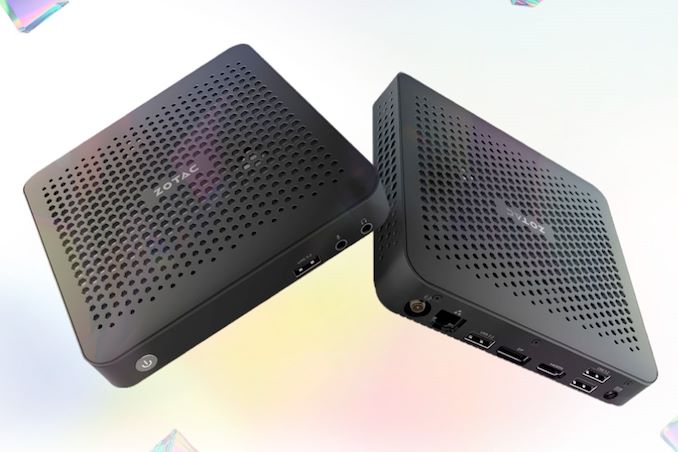

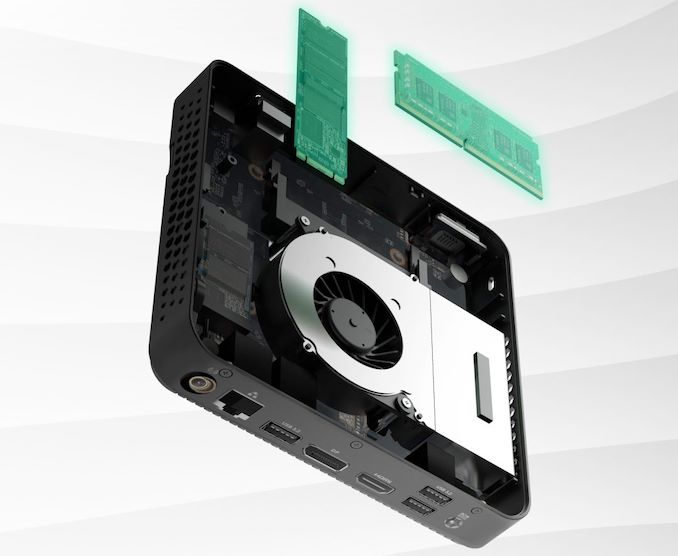
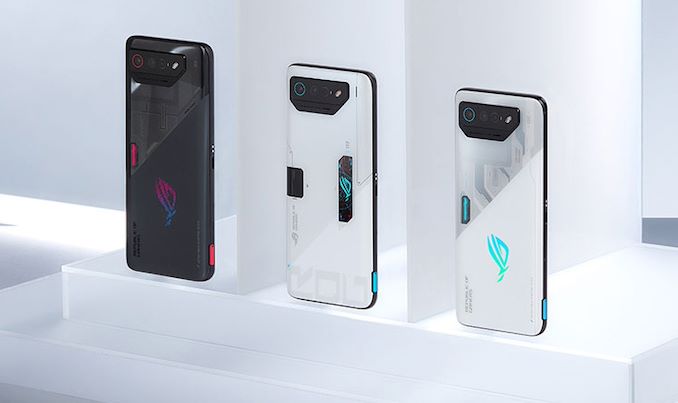
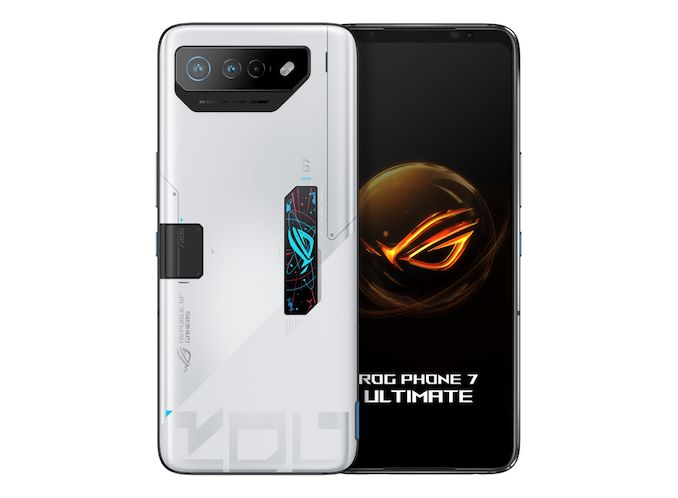
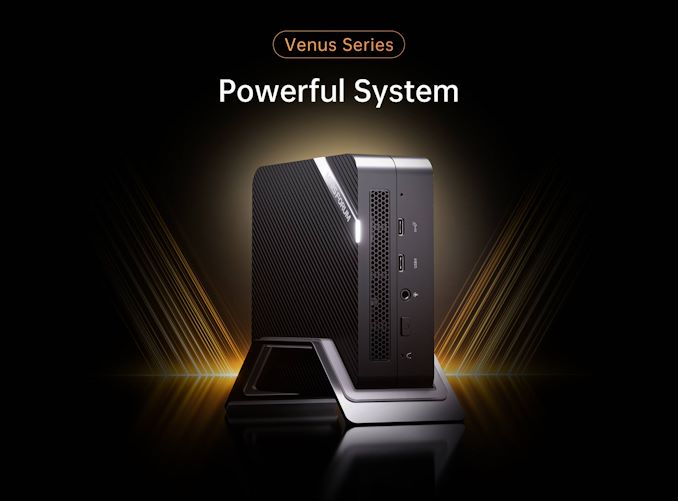
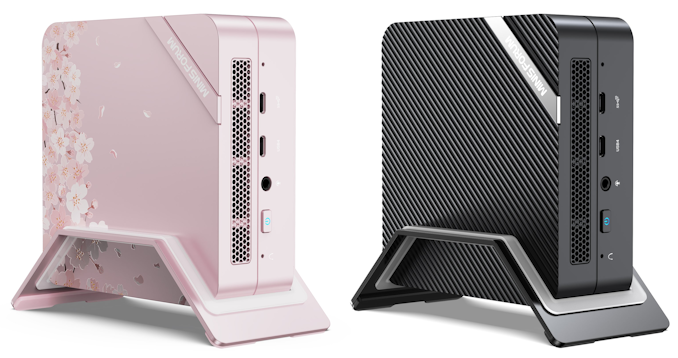


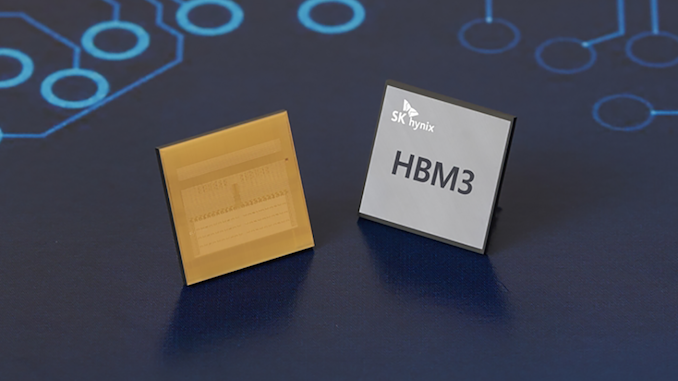


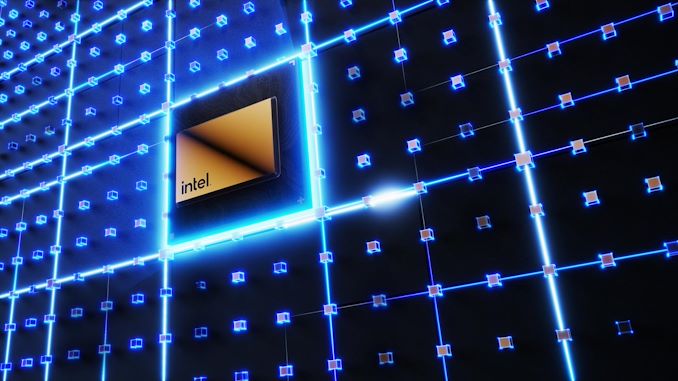
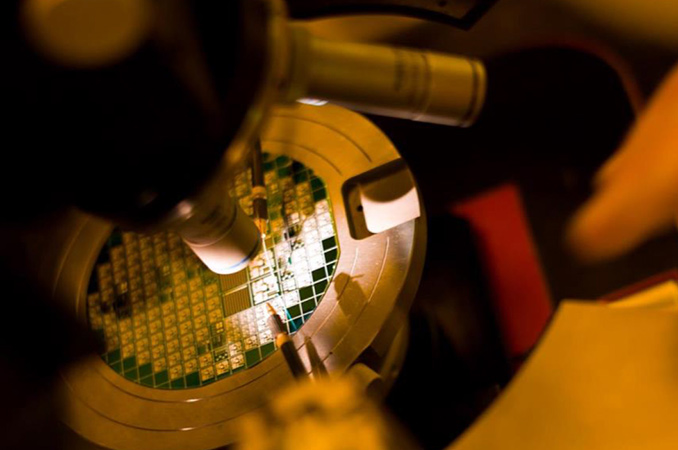
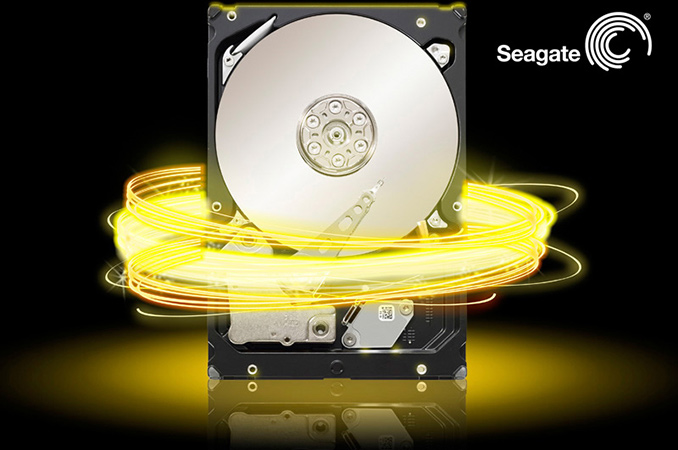
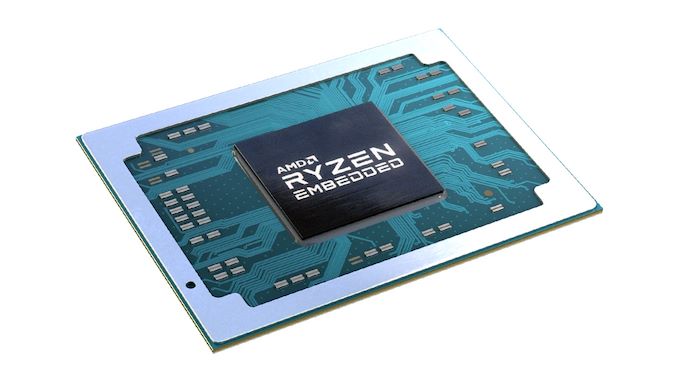
















Bookmarks